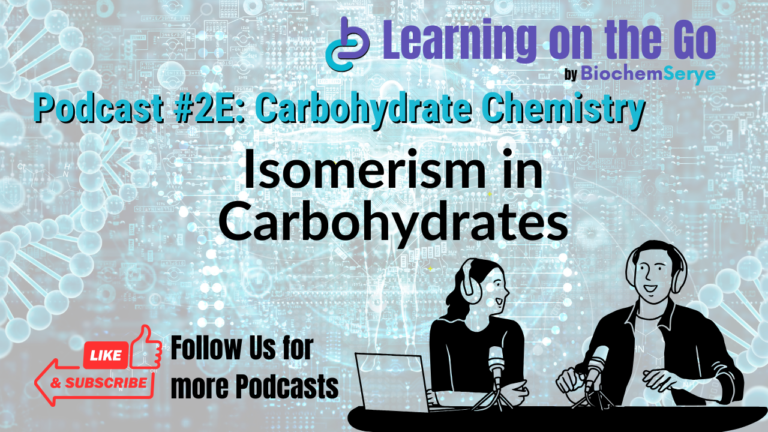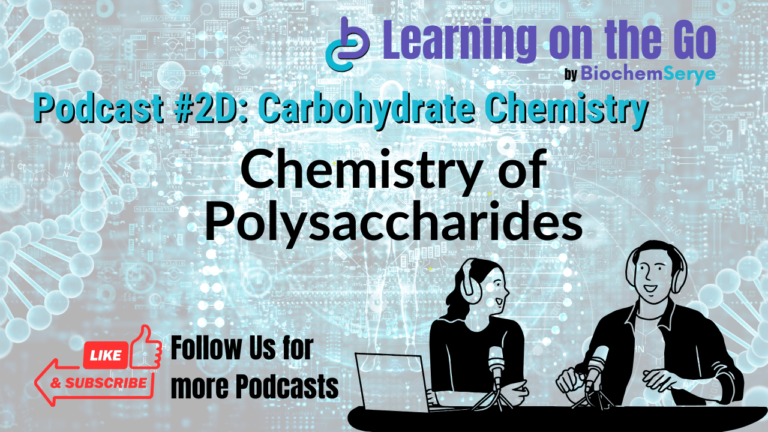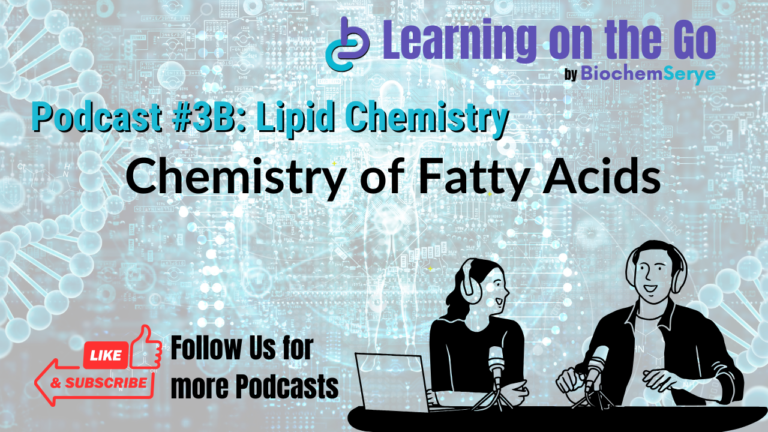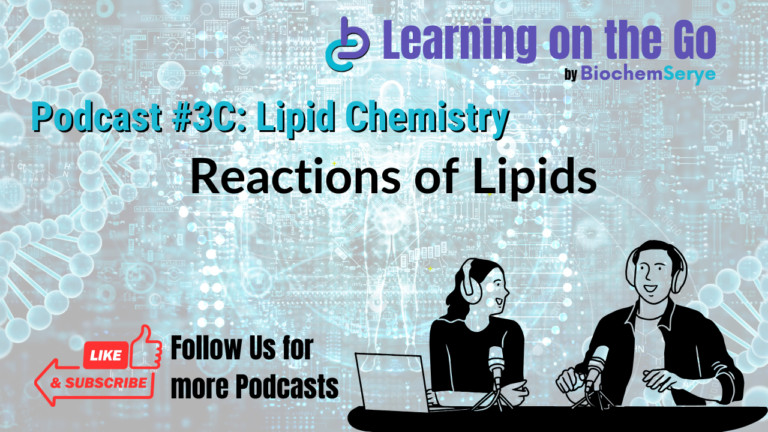Monosaccharide Derivatives Biochemistry Notes
Monosaccharide Derivatives Biochemistry Notes Outline
The Derivatives of Monosaccharides Biochemistry Notes summarize key concepts related to monosaccharide derivatives. The text focuses on the chemical modifications of simple sugars (monosaccharides) and the formation of disaccharides, highlighting their importance in various biological and medicinal contexts.
1. Key Themes of the Monosaccharide Derivatives
- Diversity Through Modification: Monosaccharides are not just simple sugars; they are versatile building blocks that can be modified to create a wide array of biologically important molecules.
- Importance of Glycosidic Linkages: How monosaccharides are linked (glycosidic linkages) determines the resulting disaccharide’s properties and larger carbohydrates’ properties. The linkage can be alpha or beta depending on the configuration of the anomeric carbon.
- Biological Significance: Sugar derivatives and disaccharides play crucial roles in cellular processes, structural components of cells and tissues, and therapeutic applications.
- Reducing vs. Non-reducing Sugars: Disaccharides are categorized based on the presence or absence of a free aldehyde or ketone group, influencing their reactivity.
2. Monosaccharide Derivatives
The document identifies several significant derivatives of monosaccharides, highlighting their structures and biological importance:
- Phosphoric Acid Esters: These are formed by the reaction of phosphoric acid with a hydroxyl group on a sugar. These are formed from the reaction of phosphoric acid with the hydroxyl group of the sugar, e.g., glucose-1-phosphate or glucose-6-phosphate.
- Importance: Phosphorylation is essential for preventing sugar diffusion out of cells and is used to form the backbones of DNA and RNA.
- Phosphorylation of sugar within cells is essential to prevent the diffusion of the sugar out of the cell. Nucleic acids (RNA and DNA) of cell nuclei also contain sugar phosphates of ribose and deoxyribose.

Monosaccharide Derivatives: Phosphoric acid ester of glucose. From Essentials of Biochemistry, 3rd edition.
- Amino Sugars have a hydroxyl group replaced by an amino or acetylated amino group.
- Examples: Glucosamine, N-acetyl glucosamine, galactosamine, mannosamine.
- Importance: Components of glycolipids (gangliosides), glycoproteins, and proteoglycans (glycosaminoglycans). They are also found in some antibiotics.
- Amino sugars are components of glycolipid (ganglioside), glycoprotein, and proteoglycans (glycosaminoglycans).
- Several antibiotics, e.g., erythromycin and carbomycin, contain amino sugar.

Monosaccharide Derivatives: Structure of amino sugars. From Essentials of Biochemistry, 3rd edition.
- Deoxy Sugars: These have a hydrogen atom replacing a hydroxyl group.
- Example: 2-deoxyribose found in DNA.

- Sugar Acids: These are formed by the oxidation of monosaccharides.
- Example: Ascorbic acid (Vitamin C) is required for collagen synthesis and is a water-soluble antioxidant. Glucuronic acid.
- Sugar Alcohols: These are less metabolically active and serve as non-glucose-forming sweeteners.
- Examples: Sorbitol and xylitol.
- Neuraminic Acid: A nine-carbon sugar derived from mannosamine and pyruvate.
- Neuraminic acid is a nine carbon sugar derived from mannosamine (an epimer of glucosamine) and pyruvate.
- Sialic Acid: Acetylated derivatives of neuraminic acid.
- Importance: Constituents of glycoproteins and glycolipids (gangliosides).
- Sialic acids are constituents of both glycoproteins and glycolipids (ganglioside).

Monosaccharide Derivatives: Structure of sialic acid or NANA. From Essentials of Biochemistry, 3rd edition.
This Monosaccharide Derivatives Biochemistry Notes highlights monosaccharide derivatives’ chemical diversity and biological importance. These molecules are critical in cellular functions, structural components, and therapeutic applications. The specific modifications and linkages of monosaccharides are key to their diverse functions. This is essential knowledge for understanding the complex world of carbohydrate chemistry and its biological implications.
Monosaccharide Derivatives Frequently Asked Questions
Why is the phosphorylation of sugars essential within cells?
Phosphorylation of sugars within cells is essential because it adds a negatively charged phosphate group to the sugar molecule. This modification prevents the sugar from diffusing out of the cell.
What are the functions of amino sugars in biological systems? Give an example.
Amino sugars are components of glycolipids, glycoproteins, and proteoglycans. For example, N-acetyl glucosamine is a component of the structure of many cellular glycoconjugates.
What is the structural difference between deoxy sugars and other monosaccharides, and where can a particular deoxy sugar be found?
Deoxy sugars have a hydrogen atom in place of one of their hydroxyl groups. The deoxy sugar 2-deoxyribose is found in DNA.
How are sugar acids formed, and what is an example of one with biological significance?
Sugar acids are formed by the oxidation of monosaccharides. Ascorbic acid (vitamin C) is one example of a sugar acid that acts as a water soluble antioxidant and is required for collagen synthesis.
Describe the medical importance of sugar alcohols, and give a specific example.
Sugar alcohols are not metabolically active, but they are used as non-glucose forming sweeteners for diabetics. Sorbitol and xylitol are common examples.
From what two molecules is neuraminic acid derived?
Neuraminic acid is derived from mannosamine, an epimer of glucosamine, and pyruvate.
What are sialic acids, and what broader class of molecules are they constituents of?
Sialic acids are acetylated derivatives of neuraminic acid, in which either the amino or hydroxyl group is acetylated. They are found as constituents of glycoproteins and glycolipids (gangliosides).
What feature distinguishes reducing disaccharides from non-reducing disaccharides? Give an example of each.
Reducing disaccharides have a free aldehyde or ketone group, whereas non-reducing disaccharides do not. Maltose is a reducing disaccharide, and sucrose is a non-reducing disaccharide.
Monosaccharide Derivatives Glossary of Terms
Glossary of Key Terms
- Anomeric Carbon: The carbon atom in a cyclic sugar molecule derived from the carbonyl carbon of the open-chain form and involved in the formation of glycosidic bonds.
- Glycosidic Linkage: A covalent bond that joins a carbohydrate (sugar) molecule to another group, which can be another carbohydrate, an alcohol, or a protein.
- Glycoside: A molecule in which a sugar is bound to a non-carbohydrate molecule, typically through a glycosidic bond.
- Monosaccharide: A simple sugar that cannot be hydrolyzed into smaller units; examples include glucose, fructose, and ribose.
- Disaccharide: A carbohydrate molecule composed of two monosaccharides joined by a glycosidic bond; examples include maltose, sucrose, and lactose.
- Reducing Sugar: A sugar with a free aldehyde or ketone group that can reduce other compounds, often detected through a reaction with copper ions.
- Non-reducing Sugar: A sugar that lacks a free aldehyde or ketone group and thus cannot reduce other compounds, for example, sucrose.
- Phosphorylation: The addition of a phosphate group to a molecule.
- Amino Sugar: A monosaccharide in which a hydroxyl group has been replaced by an amino or acetylated amino group; for example, glucosamine.
- Deoxy Sugar: A monosaccharide in which a hydrogen atom has replaced a hydroxyl group; for example, 2-deoxyribose.
- Sugar Acid: A monosaccharide in which a carbon has been oxidized to a carboxyl group; for example, glucuronic acid and ascorbic acid.
- Sugar Alcohol: A reduced form of a monosaccharide in which the carbonyl group is reduced to a hydroxyl group; examples include sorbitol and xylitol.
- Neuraminic Acid: A nine-carbon sugar derived from mannosamine and pyruvate.
- Sialic Acid: Acetylated derivatives of neuraminic acid, often found in glycoproteins and glycolipids.







